

Note: This log entry is a living document. I'll be updating this post to reflect the current configuration as time goes on.. There will also be a log at the end of the post noting modifications to the log, etc..
UPDATED-----> 09.25.2014

This log entry will instruct you on building the Optical Assembly..
Tools Required:
- 1. Needle Nosed Pliers
- 2. 1.5mm Hex Driver
- 3. 5/64" Hex Driver
- 4. Philips Screwdriver
- 5. ESD Style Precision Tweezers
- 6. Nitrile Gloves
- 7. White Cotton Gloves
- 8. KimTech KimWipes
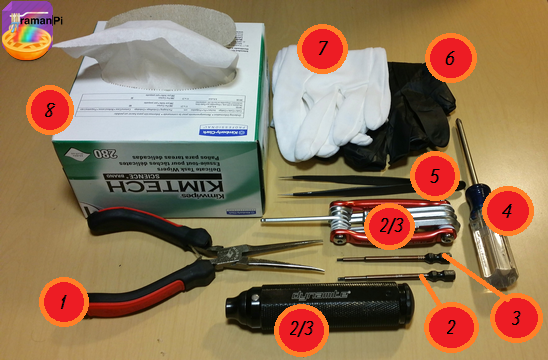
Components Required:
- A completed objectiveLens Mount
- A completed beamSplitter Assembly
- A completed laserShutter Assembly
- A completed mirrorMount Assembly
- A completed laserEmitter Assembly
- A completed filterSelector Assembly
- A completed Spectrometer
- (20x) M2 - 0.45 12.9mm Socket Cap Screws
- (4x) M4 16mm Socket Cap Screws
You will also have probably wanted to align your spectrometer before building this..
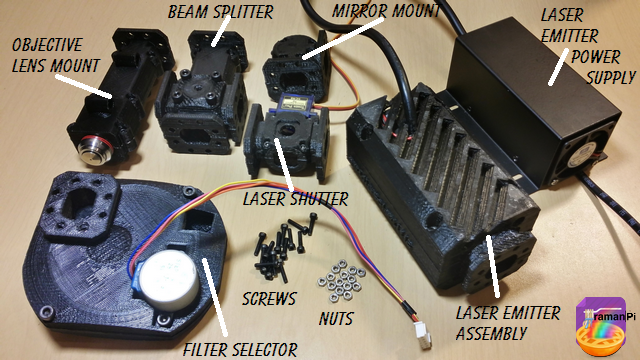
Steps:
1. Get the objectiveLens Mount and the beamSplitter assembly together with four M2 screws and four M2 nuts.
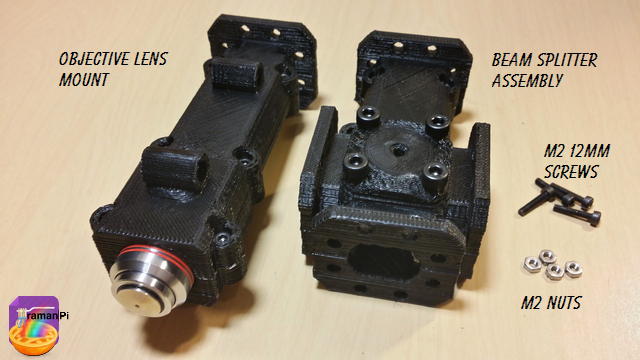
2. Make sure to orient the objective lens mount and the beam splitter assembly correctly.. The long end of the beam splitter assembly connects to the objective lens mount.. All screw heads should be on the top.
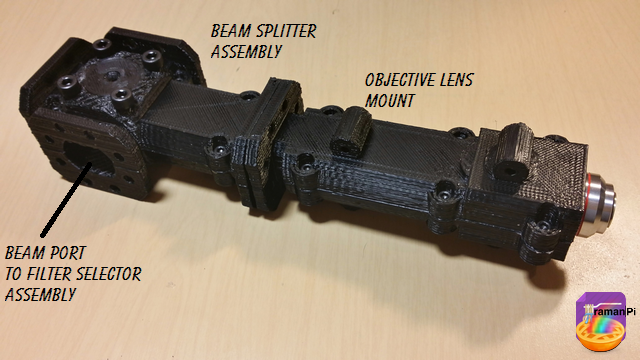
3. Place the screws in and tighten them in a graduated sequence.. Make sure to maintain as much alignment with the parts as possible.
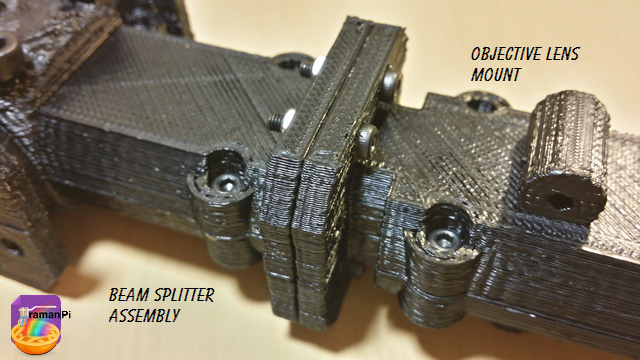
4. When you are done, it should look like this.

5. Now align the laser shutter assembly with the servo on the beam dump side, and screws up..
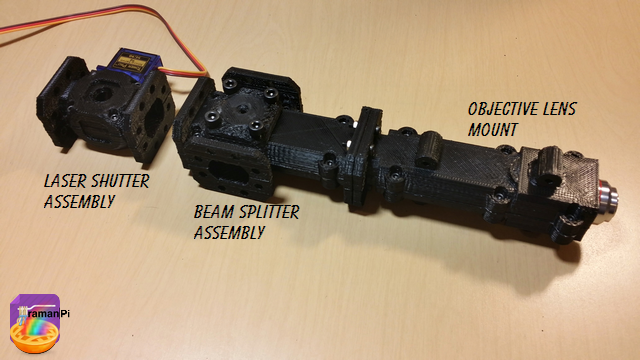
6. Tighten in a graduated sequence maintaining alignment as much as possible.
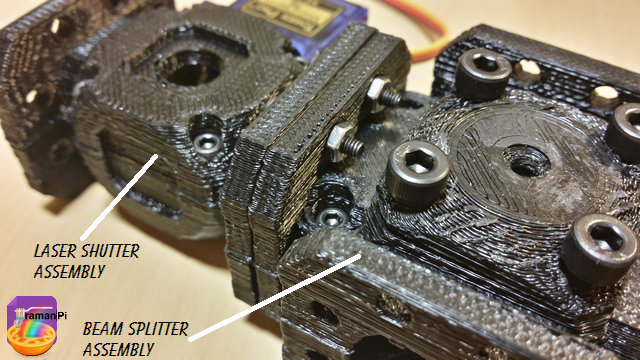
7. Align the mirror mount assembly with the laser shutter assembly with screws up and the beam entrance to the opposite side of the laser shutter servo.
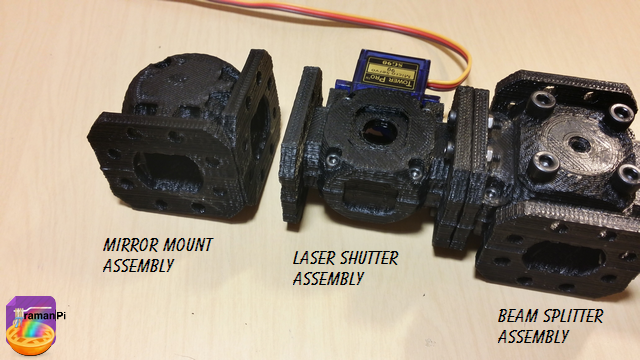
8. Tighten the screws in a graduated sequence making sure to maintain alignment as much as possible.
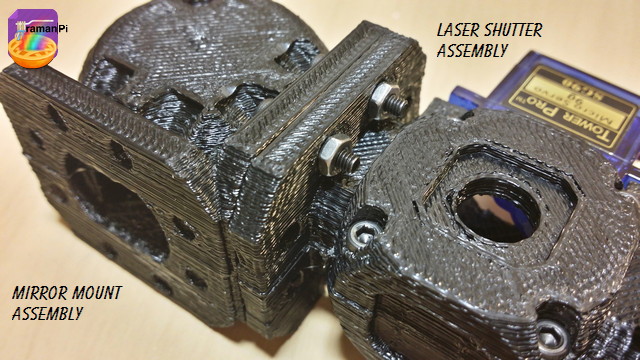
9. It should look like this when you are done.
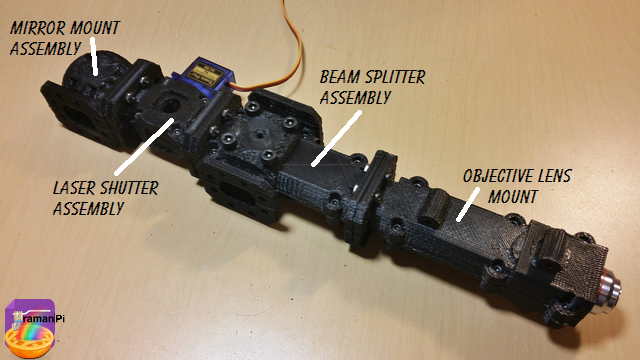
10. Get the filter selector assembly ready to attach. It will orient with the stepper motor on the opposite side of the rest of what you have so far.
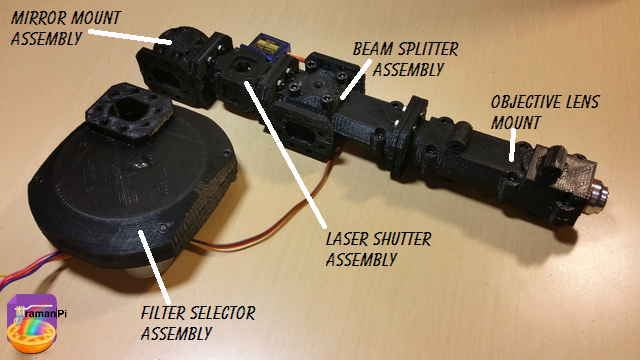
11. You will need to remove the beam splitter mount assembly from the beam splitter assembly in order to access the screw holes here.. Use nitrile gloves at minimum when handling the splitter assembly..
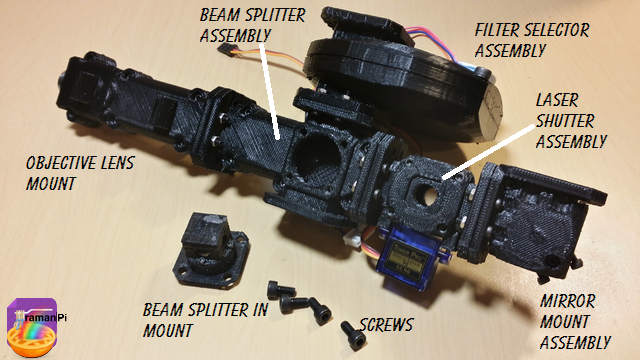
12. Carefully and in a graduated order, tighten the screws while maintaining alignment as much as possible.
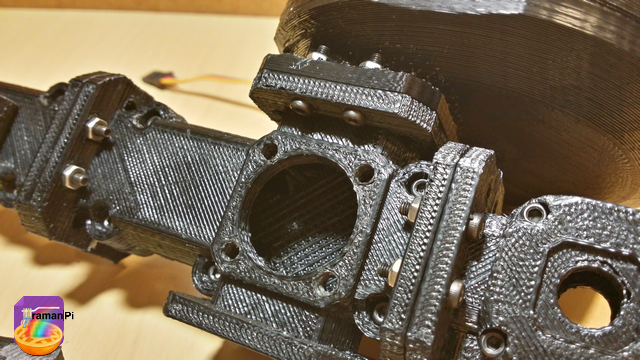
13. Replace the beam splitter mount assembly back into the beam splitter assembly..
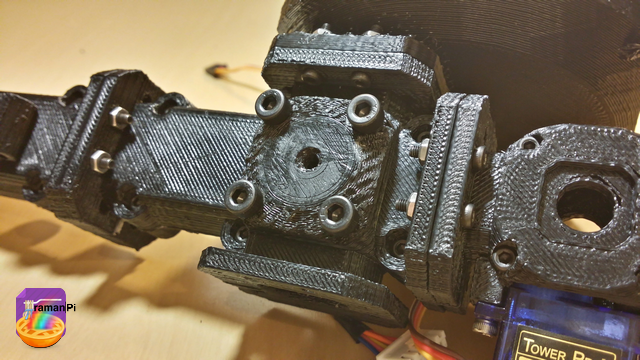

14. It should be looking pretty good so far..!

15. Align the laser emitter assembly screws up and mated to the mirror mount assembly.. The screws go directly into the flange on the laser emitter assembly... Do not over-tighten them!

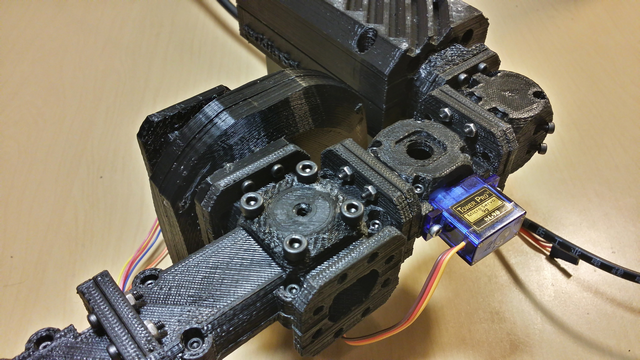
16. It should look like this when you're done.
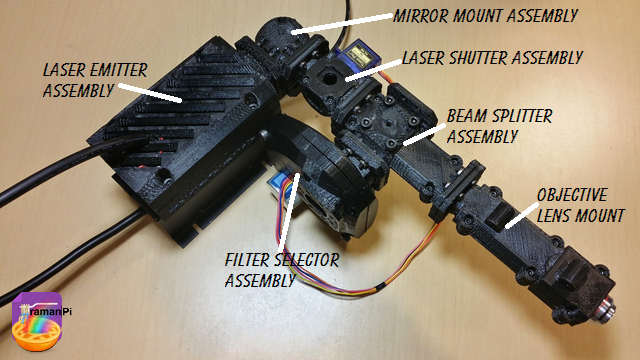
That completes the raman section of this build!! Wow!
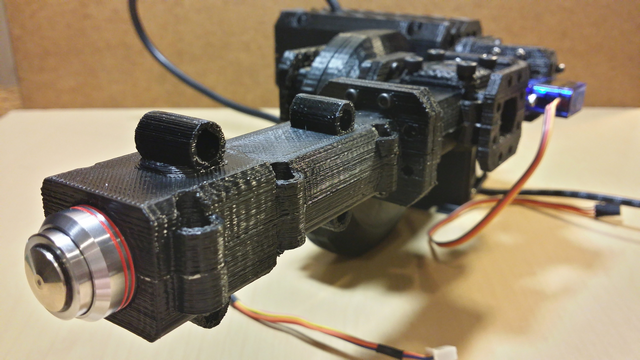
17. Now we are ready to attach the Spectrometer! The spectrometer aligns like this... Board up, and access port to the front.
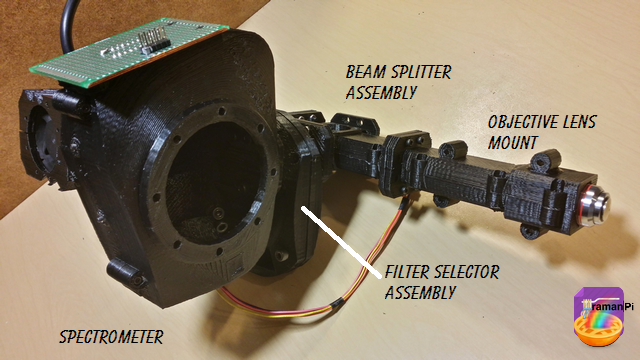
18. You will be screwing the M4 screws in from through the access port and the inside of the Spectrometer.. It's a bit of a challenge, use a 90 angle allen key if possible.
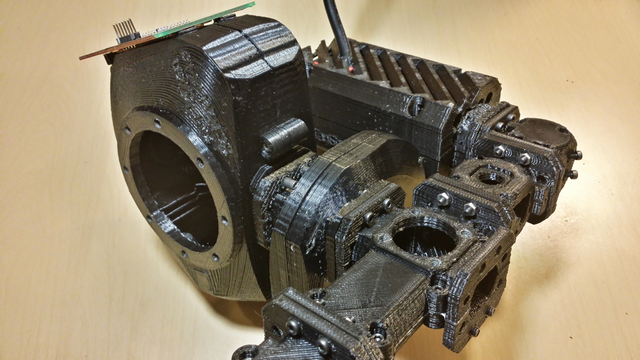
19. When that is done, place the access port cover back on the spectrometer!
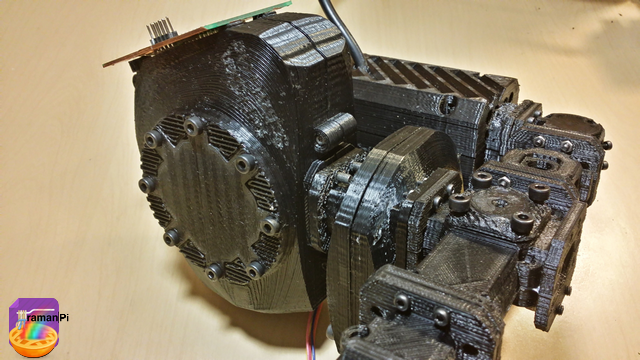
20. And when you are done, you will have completed the Optics Assembly and it should look like this!

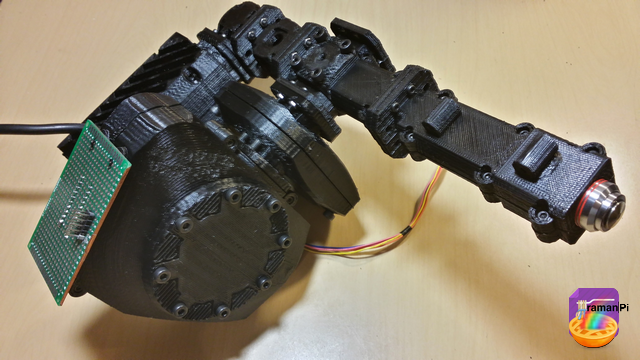
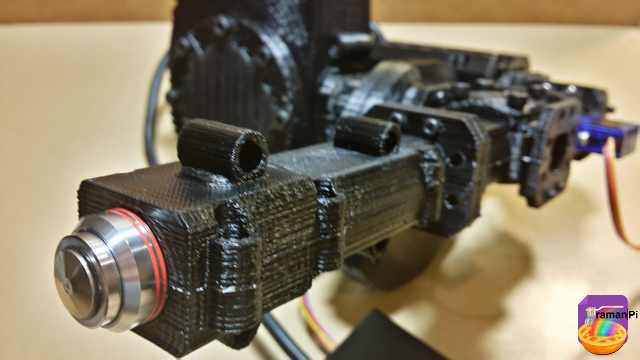
Congratulations!!
Set aside and move to next build!
You can close this tab or return to the build instructions here!

UPDATE LOG:
09.23.2014 - New Entry
 fl@C@
fl@C@
Discussions
Become a Hackaday.io Member
Create an account to leave a comment. Already have an account? Log In.
What if the sample for study is in liquid form and stores in glass container. Would this setup work? Laser going through the glass to liquid. Would the glass affect it?
Are you sure? yes | no
What if the sample for study is in liquid form and stores in glass container. Would this setup work? Laser going through the glass to liquid. Would the glass affect it?
Are you sure? yes | no
Hi. In theory the result will depend on the container to a degree. That is the reason for the preference of using quartz cuvettes and not glass containers. It also depends on what you are looking for, and a few other factors.. I'd recommend doing some background reading on raman spectroscopy... And do remember that glass is not transparent at all frequencies, so if you're working with flourescence, etc you may get undesireable results.
Are you sure? yes | no